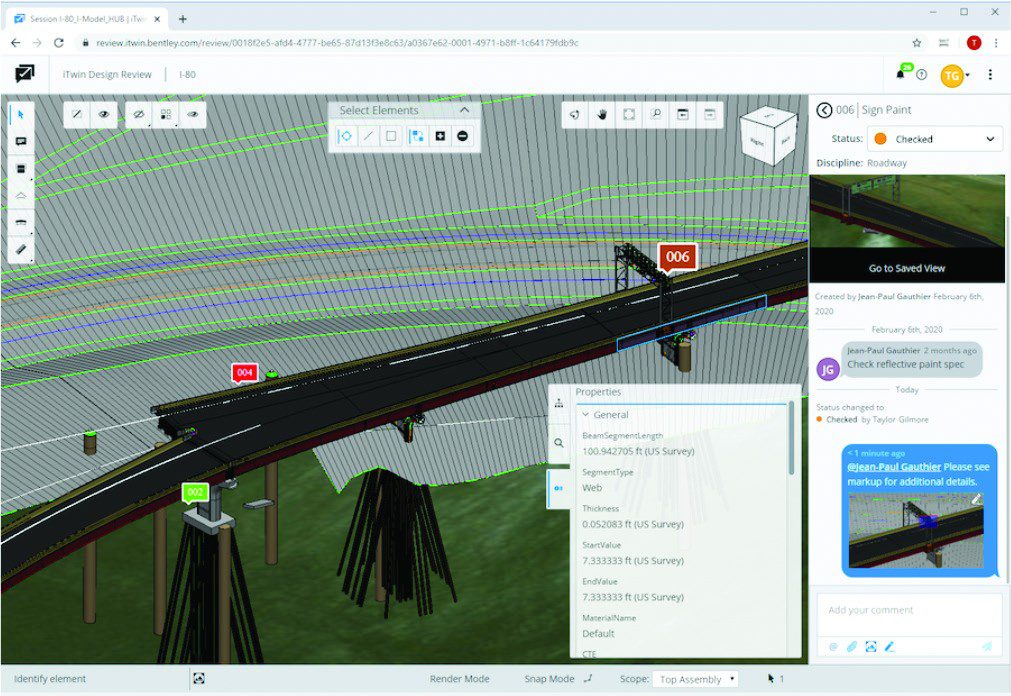Engineered Solutions: Remote Design Collaboration as the New Norm

Sponsored By:

How Design Teams of All Sizes Are Remaining Connected and Keeping Productive
Facing the New Industry Challenges in this New Normal
During the last few months, the emergence of the COVID-19 pandemic has disrupted business across numerous industries and caused firms to reevaluate and adjust their practices to keep up. In the AEC industry, this situation has accelerated an existing, growing trend toward remote design collaboration. In addition to more team members working from home due to office closures, projects have become more complex and geographically distributed, turning remote work from an afterthought to an imperative consideration.
Now more than ever, design project leaders need to keep their teams connected to information and each other, despite remote work challenges that may arise. As design teams around the world become increasingly dispersed, team members are challenged with producing the same work remotely that they used to do in the office, all while maintaining the same level of productivity and quality of work.
This need is causing many firms to shift from more manual, siloed project delivery methods to new, cloud-based solutions, purpose-built for engineering workflows. These new solutions are helping connect participants and stakeholders to quickly and easily share and find information as well as conduct collaborative design reviews, regardless of their location, keeping design teams as productive as possible, even with remote work hurdles.
Connecting Dispersed Teams with Project Information Right at Your Fingertips
One common challenge of remote work is reliably sharing information with team members. Manual methods of sharing information—such as email, FTP or ad hoc file-sharing services—can hinder productivity by making it difficult to exchange larger files, creating information silos and preventing project participants from readily finding information when they need it. Firms that rely on network drives are often hindered as well, having difficulties remotely connecting and accessing information out of office. These methods often caused team members to waste time finding information and verifying its accuracy, even causing costly delays and cutting into the overall project delivery schedule.
Many design teams have improved how they store, find and share their design records by establishing a centralized, cloud-based repository for all project information. This repository allows team members to ensure they are working with the most recent, up-to-date files, reducing the risk of rework. It also provides a secure way for all internal and external project participants to readily access information from their web browser and, in some cases, through native work environments, such as Microsoft Teams.
Design firms are now not only able to keep their remote teams connected, but they can also save significant time, while avoiding the risks associated with their legacy workflows.
Improved Design Collaboration Across the Project Team
Another common challenge of efficient remote work is ensuring that the entire project team can readily collaborate on design work. Conducting reviews using manual methods such as email or siloed markup applications makes it difficult for team members to readily provide feedback, work with multiple team members, and track and resolve issues raised. Teams risk being unable to implement changes and resolve issues in a timely or effective manner when they do not have ways to quickly and easily capture, track, and manage feedback on 2D and 3D design work in a way visible to all project participants. Ultimately, this inability impacts productivity and creates friction and added risk when delivering design projects.
Teams have been mitigating these risks and improving efficiencies through cloud-based solutions. Reviewing 2D and 3D design work in accessible, web-based environments makes it simple for teams to work together and stay on the same page. Also, by leveraging automated workflows to streamline the process of tracking, managing and resolving issues raised, it enables teams to avoid rework and ensure the highest-quality designs are being submitted. Now, team members eliminate collaborative friction and facilitate more informed review decisions—focusing on their design work and keeping the project moving forward.
The Future of Infrastructure Design
Even before COVID-19, the AEC industry was embracing greater digitization to more efficiently address remote work challenges and deliver projects through accelerated collaboration and automated workflows. Now, with the global pandemic making it mandatory for colleagues to work remotely, organizations will only continue to lean into these changes, moving toward more remote-friendly work environments and workflows.

In short, firms are embracing new paradigms of work precisely because they know that the “same old methods” are no longer adequate. When one delay or mistake can have a huge ripple effect downstream, every competitive advantage is essential. Although legacy methods of collaboration worked, team members often lost time and encountered issues locating, sharing, and verifying project information and collaborating on design work, ultimately hindering their ability to deliver projects on time and with minimal risk.
As remote collaboration becomes the new norm, so too will new cloud-based workflows, enabling all engineers to be able to work from anywhere while still maximizing efficiencies and productivity. Although this situation seemed impossible only months ago, the push from a global pandemic has moved it ever closer toward reality today.


